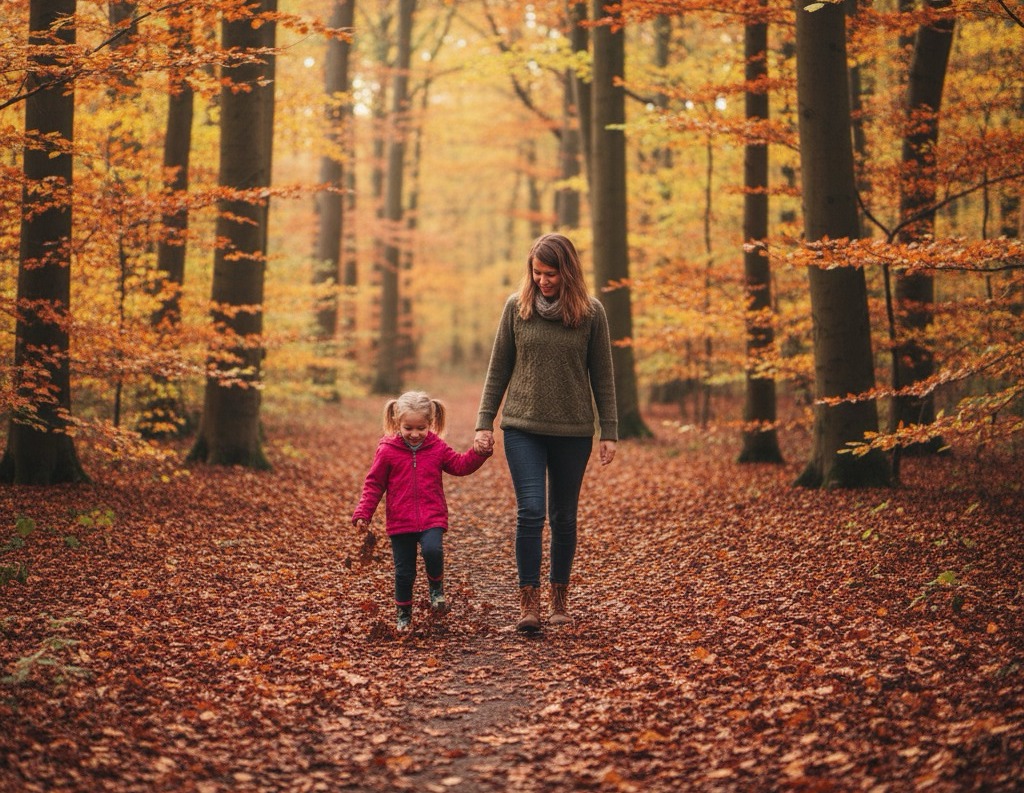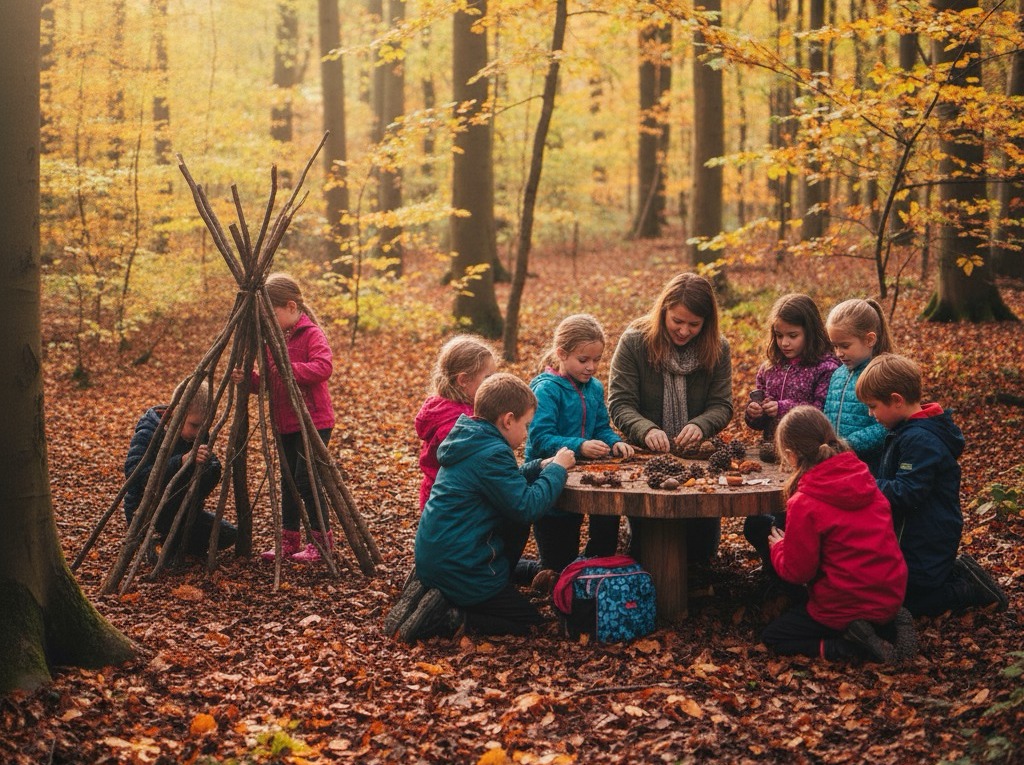· Guides & Resources · 8 min read
Forest School Myths vs. Reality: Debunking Common Misconceptions
Is Forest School just a muddy free-for-all, or is there more to it? We debunk common forest school myths and explain the reality for UK parents.

Forest School. You’ve likely heard the name, perhaps seen pictures of rosy-cheeked children beaming amongst the trees. It sounds wonderfully appealing, yet for many parents, a few questions and perhaps some forest school misconceptions UK might linger. Is it truly beneficial, or just a bit of a fad? Is it safe? Does “real” learning happen?
It’s natural to have these queries. When it comes to our children’s education and wellbeing, we want to be sure. So, let’s tackle some of the most common forest school myths head-on and uncover the reality of this inspiring educational approach. The aim is to offer a clear forest school explained perspective, helping you understand its core values.
Myth 1: Forest School is Just Unstructured Playtime in the Woods.
Reality: This is one of the biggest forest school myths. While play is absolutely central to the Forest School ethos, and children are given significant freedom to explore their own interests, it’s far from being just unstructured playtime.
- Purposeful Play: The play in Forest School is highly purposeful. It’s through play that children learn, experiment, solve problems, and develop crucial life skills.
- Qualified Leaders: Sessions are facilitated by trained Forest School leaders. These leaders are skilled in observing children, understanding their developmental needs, and gently guiding learning. They introduce activities, skills, and challenges when appropriate, ensuring the experiences are rich and developmental.
- Long-Term Process: A core forest school definition emphasises it as a long-term process. Regular sessions allow children to build on skills, deepen their connection with nature, and grow in confidence. It’s not a one-off nature walk.
- Child-Led, Adult-Facilitated: Leaders create a framework and offer opportunities, but the children’s interests often direct the specific activities. If a child discovers an interesting insect, the leader might provide magnifying glasses and identification sheets, turning curiosity into a learning moment. This approach fosters a genuine love of learning.
Think of it as a carefully crafted learning environment, where the “classroom” is the natural world and the “lessons” are often discovered rather than dictated. It’s a type of outdoor learning, but with a very specific, well-researched pedagogical approach.
Myth 2: Forest School is Too Dangerous. They Use Tools and Fire!
Reality: This is a very understandable concern for parents. The question, “is forest school safe?” is a critical one. The answer is that safety is absolutely paramount in any reputable Forest School.
- Risk-Benefit Assessment: Forest School operates on a principle of “supported risk-taking.” This doesn’t mean exposing children to uncontrolled dangers. Instead, it involves qualified leaders conducting thorough risk-benefit assessments for all activities and the site itself.
- Qualified Practitioners: In the UK, recognised Forest School leaders typically hold a Level 3 qualification. This training includes comprehensive modules on risk management, safe tool use, fire management, and emergency procedures.
- Gradual Introduction to Tools and Fire: When tools (like small saws or peelers for whittling) or fire are part of the experience, they are introduced gradually and with very strict safety protocols and high levels of adult supervision. Children are taught to respect tools and fire, understand the associated hazards, and use them responsibly within clear boundaries.
- Developing Risk Awareness: A key benefit is that children learn to assess and manage risks for themselves in a controlled environment. This is an incredibly valuable life skill. They learn their own limits and how to make sensible judgments, which can actually make them safer in the long run.
- High Adult-to-Child Ratios: Forest Schools typically operate with higher adult-to-child ratios than many other settings, ensuring close supervision, especially during activities that involve perceived risks.
So, while the idea of your child using a small saw might initially sound alarming, the reality is that it’s done with meticulous attention to safety, empowering children with skills and responsibility. It’s about teaching them how to be safe, not just keeping them away from anything with a potential hazard. Many forest school misconceptions UK revolve around safety, but established Forest Schools prioritise it above all else.
Myth 3: It’s Not ‘Real Learning’ – They Won’t Be Ready for School.
Reality: This myth often stems from a traditional view of what learning looks like (desks, books, and worksheets). However, Forest School provides a rich, multi-sensory learning environment that supports holistic development and can actually enhance a child’s readiness for, and success in, formal schooling.
- Holistic Development: The forest school definition highlights the development of confidence and self-esteem. Beyond this, it nurtures physical, social, emotional, intellectual, and language development.
- Physical: Gross and fine motor skills get a fantastic workout – climbing, balancing, carrying, building, whittling.
- Social: Children learn to collaborate, share, negotiate, and work as a team when building a den or playing a group game.
- Emotional: Overcoming challenges, managing frustration, and experiencing success builds resilience and emotional intelligence. The natural environment itself has a calming and regulating effect.
- Intellectual: Problem-solving (how can we make this den waterproof?), curiosity (what kind of bug is this?), and critical thinking are constantly engaged.
- Language & Communication: Describing discoveries, planning activities, and telling stories all boost language skills.
- Curriculum Links: Many Forest School activities naturally link to Early Years Foundation Stage (EYFS) or National Curriculum subjects. Measuring sticks for maths, observing seasonal changes for science, storytelling for literacy – the opportunities are endless.
- Improved Concentration and Motivation: Studies and anecdotal evidence often show that children who attend Forest School can have improved concentration and motivation when they return to the indoor classroom. The hands-on, engaging nature of outdoor learning sparks a love for discovery.
- Developing ‘Soft Skills’: Skills like resilience, creativity, problem-solving, and teamwork are increasingly recognised as vital for future success. Forest School excels at nurturing these.
Rather than hindering academic progress, Forest School can build a strong foundation of curiosity, confidence, and a positive attitude towards learning, which are invaluable assets for any child. The what is forest school UK question often leads to discussions about its educational validity, and the evidence points strongly towards significant benefits.
Myth 4: Forest School is Only for Very Young Children (Toddlers and Preschoolers).
Reality: While Forest School is incredibly popular and beneficial for early years, its principles and practices can be adapted for, and offer huge advantages to, learners of all ages – including primary school children, teenagers, and even adults.
- Adaptable Activities: The core ethos of child-led learning in a natural environment remains, but the complexity of tasks, tools used, and challenges undertaken can be scaled appropriately for older age groups.
- Curriculum Enrichment for Older Children: For primary children, Forest School can offer a practical, hands-on way to explore science, geography, maths, and art concepts. It can provide a different learning environment for those who may not thrive in a traditional classroom.
- Wellbeing and Resilience for Teenagers: For older students, it can be a powerful tool for building self-esteem, reducing stress, developing teamwork, and fostering a connection with the natural world, which is particularly important in today’s high-pressure, digitally-focused world.
- Adult Learning and Team Building: Even adults can benefit from Forest School principles for team-building, stress reduction, and learning new skills.
The core forest school explained is an approach, not just a set of activities for a specific age. The focus on holistic development and experiential learning is relevant across the lifespan.
Myth 5: You Need a Massive Ancient Woodland to Run a Forest School.
Reality: While a beautiful, mature woodland is a wonderful setting, the forest school definition focuses on “a woodland or natural environment with trees.” This means Forest School can, and does, happen in a variety of locations.
- School Grounds: Many schools develop their own Forest School areas on their grounds, even if it’s a smaller copse of trees or a dedicated wildlife garden.
- Local Parks and Green Spaces: With appropriate permissions and risk assessments, local parks or accessible green spaces can be used.
- Adaptability: The key is the ethos and the quality of the facilitation, not necessarily the grandeur of the forest. Skilled leaders can create meaningful Forest School experiences in surprisingly modest settings. The focus is on the connection with nature, whatever its scale.
The essence of what is forest school UK is about the approach to learning and interaction with the natural world, not about having access to a vast, remote wilderness.
Forest School is a carefully considered, well-researched educational approach with a strong emphasis on safety, holistic development, and fostering a deep connection with nature. By looking beyond the forest school myths, parents can see the profound benefits it offers children. It’s about nurturing resilient, confident, and curious learners, equipped with skills and a love for the outdoors that will last a lifetime. If you’re curious, seek out a local Forest School, talk to the leaders, and perhaps even observe a session. You might find it’s exactly what your child would thrive on.


